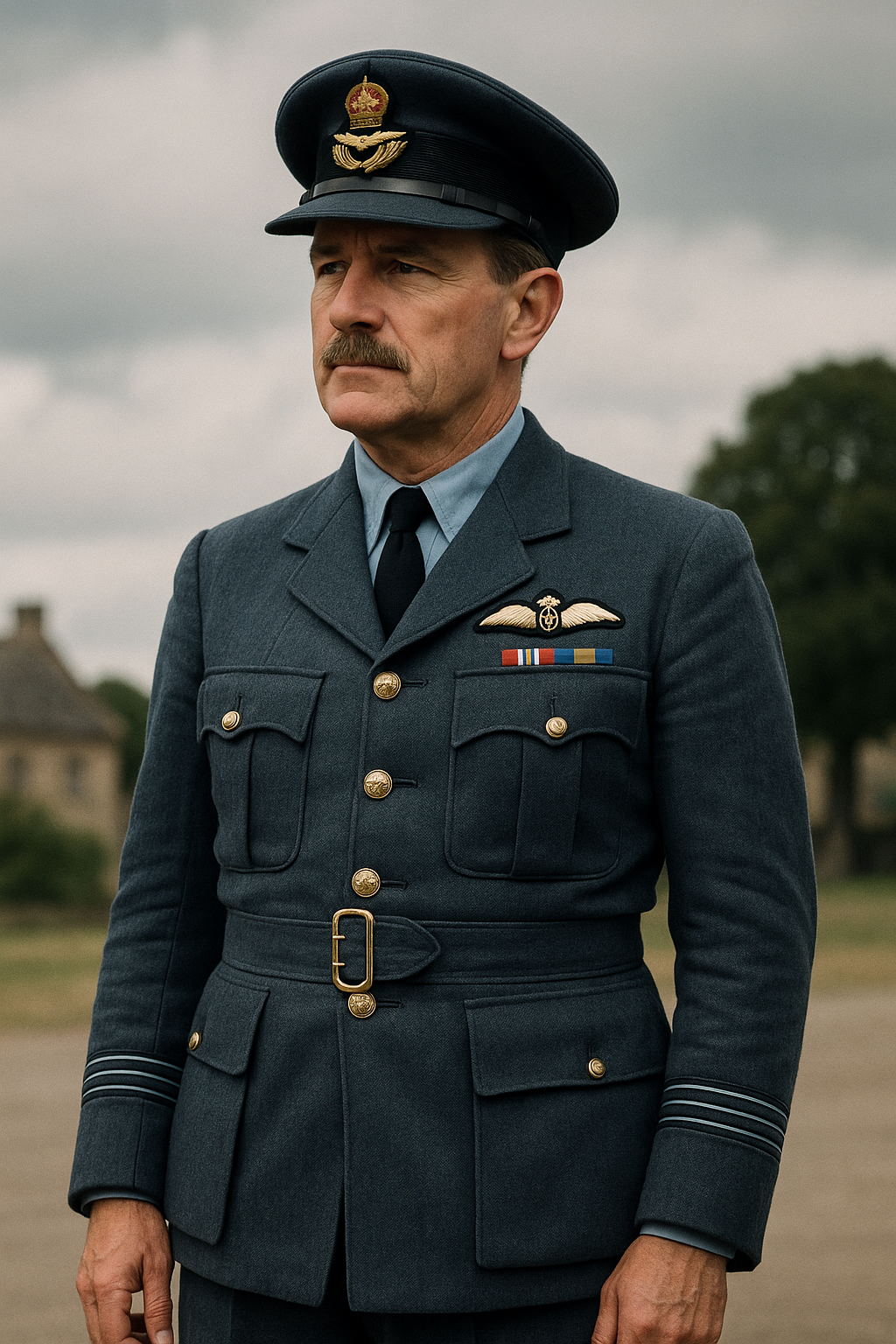
Vintage RAF Uniforms: A Journey Through British Military Heritage
Published on Jun 16, 2025
Vintage RAF Uniforms: A Journey Through British Military Heritage
British military uniforms are more than functional attire—they're symbols of pride, discipline, and legacy. Among the most iconic of these is the RAF (Royal Air Force) uniform, especially those worn during World War II. However, the story of vintage RAF uniforms is intricately woven into a broader historical tapestry that encompasses Napoleonic British uniforms, Victorian-era military attire, and the full spectrum of WW2 British officer uniforms.
Let's take a closer look at the fascinating evolution of vintage RAF uniforms and their connections across British military history.
The Birth of the RAF and Its Uniforms
The Royal Air Force was officially formed on April 1st, 1918, merging the Royal Flying Corps (RFC) and the Royal Naval Air Service (RNAS). From its very beginning, the RAF needed a distinct identity—and nothing establishes identity quite like a uniform.
The Iconic Blue-Grey Fabric
Unlike the olive drab of the army or the navy blue of the Royal Navy, RAF uniforms introduced a blue-grey colour scheme. The choice of this unique shade was not purely aesthetic—it symbolized the skies and offered a sense of individuality for this new branch of the military.
Key Elements of WW2 RAF Uniforms:
- Service Dress (SD): The classic RAF Service Dress, worn by officers and aircrew, featured a tunic with pleated breast pockets, a matching belt, and polished brass buttons.
- Trousers: Standard-issued trousers in matching blue-grey.
- Side Cap or Peaked Cap: The RAF's version of headgear, often adorned with the insignia denoting rank and role.
- Insignias and Badges: Wings, rank stripes, and squadron patches highlighted the wearer's specialization.
The Evolution of RAF Uniforms During WW2
World War II witnessed significant changes in RAF uniform design, driven by technological advancements, strategic demands, and lessons learned from the battlefield.
Battle Dress Introduction
As the war progressed, battle dress uniforms—originally developed for the army—were adopted by RAF personnel engaged in more operational roles. These were shorter, more rugged, and better suited for physical activity.
Flight Suits and Flying Gear
RAF aircrew, especially bomber and fighter pilots, required specialized gear:
- Sheepskin flying jackets (like the Irvin jacket)
- Flight overalls
- Goggles and oxygen masks
These practical outfits are now highly collectable pieces of vintage RAF uniform history.
Connecting the Eras: Napoleonic and Victorian Influences
To understand the full significance of RAF uniforms, we must look back to earlier periods of British military attire.
Napoleonic British Uniforms
The British military during the Napoleonic Wars (1803–1815) was renowned for its vibrant red coats, elaborate epaulettes, and regiment-specific detailing. These uniforms were designed to inspire fear and pride in equal measure.
Though radically different from RAF attire in colour and form, Napoleonic British uniforms set early standards for:
- Regimental distinction
- Uniform precision
- Pride in Presentation
The tradition of detailed insignias and a strong visual identity carried through into later uniforms, including those of the RAF.
Victorian Era Military Uniforms
In the Victorian era, British military uniforms became more diversified. The British Empire's expansion meant that soldiers were deployed in various climates and terrains, which in turn influenced the uniform materials and cuts.
Officers' uniforms, especially, grew more decorative. These Victorian military uniforms brought:
- Gold braiding and intricate buttons
- Tailored frock coats
- Ceremonial headgear
These ceremonial traditions influenced the RAF's formal dress standards, particularly in parades and state events.
WW2 British Officer Uniform: A Link to the RAF
RAF officer uniforms in World War II shared similarities with their army counterparts in terms of cut and prestige. Officers' uniforms included:
- Tailored tunics with ranks on the epaulettes
- Sam Browne belts (for ceremonial wear)
- Distinguished cap insignias and medals
The World War II British officer uniform exudes authority and distinction. Collectors and historians often value these for their craftsmanship and historical context, especially when linked to specific squadrons or battles.
Why Vintage RAF Uniforms Are Highly Collectible
1. Historical Value
Each uniform tells a unique story—some belonged to war heroes, others to everyday aircrew who faced unimaginable odds.
2. Craftsmanship
Vintage uniforms were crafted from durable materials and featured precise tailoring. Many outlasted the war itself.
3. Symbolic Significance
They embody courage, sacrifice, and national pride, making them popular for reenactments, museums, and private collections.
Modern Appreciation: Reenactments, Museums, and Fashion
Today, vintage RAF uniforms are highly sought after by:
- Collectors
- War museums
- Film and theatre productions
- Historical reenactors
- Fashion designers (who often take inspiration from military aesthetics)
Their timeless appeal is evident in how elements of RAF design still influence menswear today—from the tailored tunic silhouette to the iconic flying jackets.
Where to Find Authentic Vintage RAF Uniforms
If you're looking to explore or purchase vintage RAF attire, Paddelaters.com offers a carefully curated collection that includes:
- WW2 RAF officer tunics
- Vintage flight jackets
- Accessories and headgear
- Uniforms from related eras (Napoleonic, Victorian)
Each piece is carefully selected for its authenticity, condition, and historical value—making it perfect for enthusiasts, historians, or costume designers.
Conclusion: A Fabric of Heroism
Vintage RAF uniforms serve as powerful reminders of a pivotal moment in world history. Their design, symbolism, and endurance connect them to earlier British military traditions, from the Napoleonic Wars to the Victorian Empire.
Whether you are a collector, history buff, or intrigued by the elegance of military dress, exploring these uniforms offers a compelling journey into the soul of British identity.
